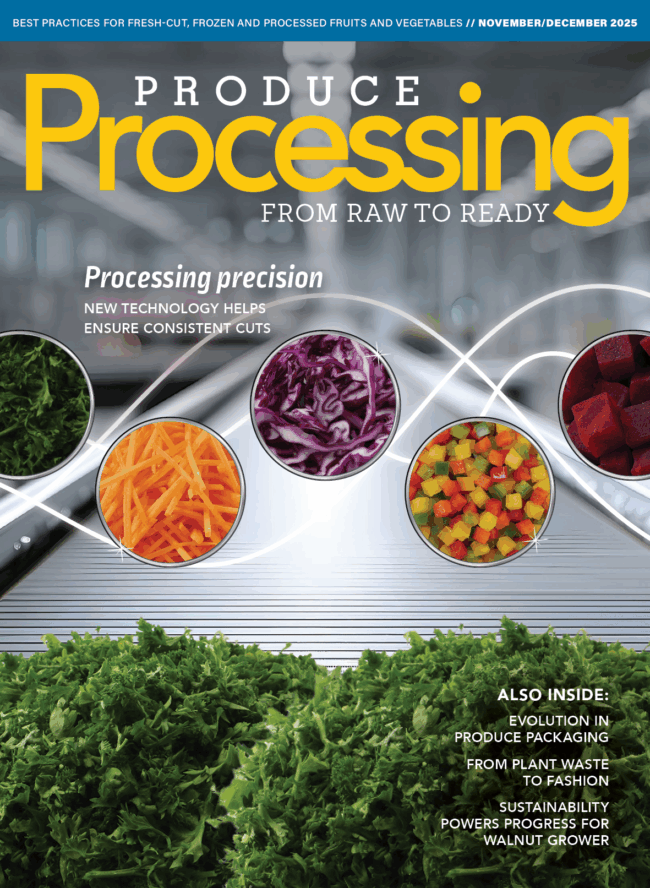Consumer acceptance of GM crops increasing
The use of genetically modified organisms (GMO) is growing every year, despite vocal opponents of the technology. But GM crops have the potential to be better for the environment and better for end users, said Sharon Bomer, the acting vice president of food and agriculture for the Biotechnology Industry Organization (BIO). The association was formed in 1993 by the biotech industry to represent it at state and national levels.
Globally, there were almost 300 million acres of genetically engineered crops grown in 2007, an increase of 12 percent (more than 30 million acres) over the previous year. That’s equal to the total amount of farmed land in the United States. U.S. growers farmed 143 million acres of GMOs that same year, an increase of 6 percent.
Most of those GM crops planted throughout the world have been manipulated to make them herbicide tolerant, although crops with “stacked” traits are the fastest growing segment of the GMO market, Bomer said. Biotech companies have incorporated as many as eight pesticide, herbicide or disease tolerances in one fruit or vegetable, she said.
Engineering crops to be tolerant to pesticides and herbicides can be better for the environment and make growing easier on farmers. Bomer credits GMOs with reducing pesticide use by 630 million pounds and increasing no-till farming by 35 percent. Crops that are drought resistant also reduce water stress in arid regions, and Bomer said GM cotton has saved 93 million gallons of water since its introduction six years ago. Biotech companies also have increased nitrogen efficiency in some crops, which reduces the number of applications needed for growth and fertilization.
“Agricultural biotech does help increase yield as well,” Bomer said.
Corn yields have increased 30 percent since GM varieties were introduced in 1996 and soybean yields have increased 17 percent with GM varieties. Increased yields means more food, fiber or fuel can be grown on the same size plot as a non-GM variety, which is important as populations increase and arable land decreases. In fact, Bomer said the fastest growth in GMOs is in developing countries.
Despite the advantages to GMOs – increased output and decreased inputs – consumers haven’t readily accepted biotech. Opponents of GMOs have been vocal, and developers have halted biotech programs because they believe consumers won’t accept the products.
“Biotech developers have been criticized because they haven’t developed crops with direct human benefits,” Bomer said.
But more products are becoming available that consumers may see the benefits to. Fruits and vegetables have been developed that increase vitamins, starches and anthocyanins, or simply for better processing characteristics or visual quality. Allergens are a concern that biotech developers can address as well – a researcher at North Carolina Agricultural and Technical State University has developed an allergen-free peanut that could make foods safer for the three million Americans with peanut allergies.
It’s this type of work that will sway public opinion in favor of modified crops, Bomer said, even in regions that have historically been opposed to GMOs.
“Over the last year, I think we are starting to see a shift, even in Europe,” she said.
Three studies were conducted in 2008 that looked at the acceptance of GMOs. The International Food Information Center (IFIC) conducted a study of U.S. consumer trends, the European Commission released a survey of its population and the Asian Food Information Center (AFIC) conducted a survey of consumer trends in major Asian markets.
According to the IFIC report, U.S. consumers are almost all in favor of or neutral toward biotech products. The study found that 1 percent of shoppers seek out biotech labels, but 31 percent were in favor of GMOs and 53 percent were identified as neutral. When consumers in the study were informed about specific benefits to the biotech products, 78 percent said they were likely to purchase the product.
In Europe, the commission study found consumers had little reaction to GMO labels – but that may be an indication that people just aren’t looking at the labels, Bomer said. Most shoppers didn’t appear to intentionally avoid GM products, but they were influenced by labels that identified the product that GM-free. The benefits of GMOs are not widely recognized by the average shopper, according to the European Commission study.
Perceptions of GMOs varied widely across Asia, according to the AFIC survey. The greatest difference in perceptions was between nations that imported most of their food and nations that were large exporters. Japan and Korea, which import a large portion of their food supply, were less favorable of GM products. The benefits weren’t recognized by the populations, with 71 percent of Japanese shoppers and 45 percent of Korean shoppers unaware of the benefits of GMOs. China, India and the Philippines were more favorable of GM crops and consumers in those countries were aware of the benefits, according to the AFIC study. Few of the countries surveyed were concerned about the safety of GMOs and most consumers could identify a few benefits to GM products.
As acceptance continues to grow, shippers and processors can choose to market GM products as a commodity or a separate category. If a GM fruit or vegetable was developed to increase the consumer attributes – such as visual quality or health benefits – then it should be identified separately to get added value, Bomer said. If the GM fruit or vegetable makes the growing or processing easier, it should be marketed similar to non-GM products because the added value is on the back end, she said.










